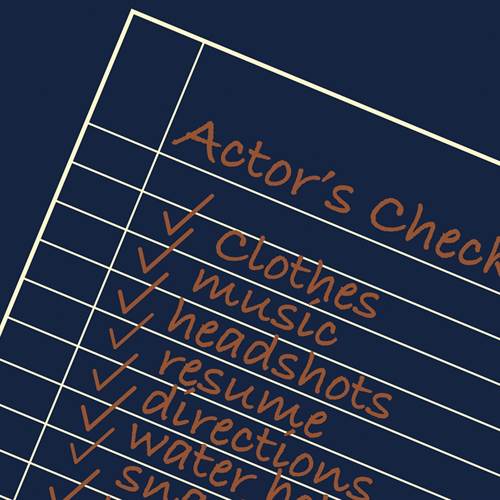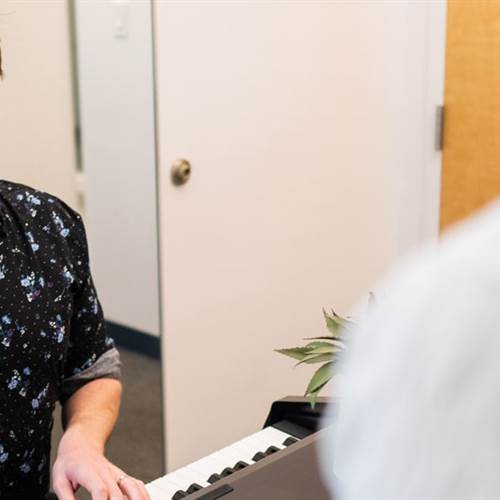
The "King" of All Vocal Exercises: SOVT Exercises
Posted Saturday, February 15th 2025 by Bryan Chan
In this article, Bryan Chan discusses the benefits of Semi-Occluded Vocal Tract (SOVT) exercises for reducing strain and improving vocal flexibility, emphasizing breath control, and maintaining consistency as well as effective vocal maintenance.
If you have taken any voice lessons in the past or watched videos about vocal exercises, chances are you have practiced some form of SOVT exercise. SOVT exercises, short for Semi-Occluded Vocal Tract exercises, is a class of vocal exercises that rely on a partially-closed mouth or nasality to create “back pressure” within the vocal tract, reducing vocal fold strain and increasing flexibility in vocal registers. SOVT exercises are widely lauded for their versatility and vocal health benefits.
You can think of SOVT exercises as any non-vowel straw-like sounds that you would make in a typical voice lesson. Here are a few notable examples:
- Any exercises involving singing through a straw
- Lip Trills, Tongue Trills, Raspberries (Lip Trill with tongue out)
- “V”, “Z”, and “Th” consonant sounds prolonged
- “M”, “N”, and “Ng” nasal consonant sounds prolonged
- Puffed Cheeks “u” (singing with a tiny "u" vowel lip opening)
What I love about SOVT exercises is that they are extremely versatile and simple, and they apply to singers of all levels. In this interview with Larry King, pop legend Celine Dion demonstrates different types of SOVT exercises (lip trills, hums) that she regularly practices as a form of vocal maintenance. She compares practicing SOVT exercises before singing songs to dancers stretching at a bar before dancing. She says that although they are not "artistically beautiful" they keep her voice "going." Indeed, SOVT exercises have been used for centuries by singers of all levels and genres for vocal improvement and maintenance.
A Few Things to Look Out For
As beneficial as SOVT exercises can be, they can be counterproductive when done incorrectly. I remember hating lip trills when I first started singing, only to discover a few years later that the reason I hated it was because I had been doing them with unnecessary effort and strain. Here are a few questions you want to ask yourself when doing any SOVT exercise:
1. Am I giving enough (or too much) breath?
Most SOVT exercises have a “measure of success” built into the sound. Whether it’s the vibration of the lips in lip trills, the vibration of the tongue in tongue trills, or air bubbles produced in a straw-in-water exercise, those measurements can give you information about whether you are giving too little or too much air.
For example, many of my students struggle with maintaining the vibration of their lips when doing long phrases of lip trills. While it is tempting to blame the lip and mouth muscles for the lack of lip vibration, chances are it’s breath related. I then instruct them to give me twice the amount of air flow and usually the lips vibrate again.
2. Am I consistent with my breath?
Once you figure out the right amount of breath to use for your SOVT exercise, you will want to check for the consistency of your breath flow during the exercise. This is especially important when making SOVT sounds on complicated scales with lots of moving notes. Am I using the same amount of breath flow regardless of where I am in my range? Are there any fluctuations in my breath when I change between notes?
A useful tool to increase consistency is drawing an invisible straight horizontal line in front of you with your index finger while you do the SOVT exercise. The straight horizontal line denotes the breath flow, which should ideally be consistent throughout your range. The "drawing" should be quite slow and should be reset with each breath.
Many of my beginner students find it quite difficult to draw a perfectly straight horizontal line while singing a SOVT exercise. This is because our minds are interconnected with our bodies and our movement. When my students subconsciously change their breath flow during a long SOVT phrase, they reflect that subconscious change by either changing the trajectory of their straight line drawing or stopping the drawing completely. If that happens to you, simply tell yourself that the primary goal of this exercise is to draw a perfectly straight horizontal line with uniform speed rather than singing. Nine times out of ten this will cultivate consistent breath when practicing an SOVT.
3. How much vocal effort am I using?
Be honest with yourself when asking this question. On a scale of one to ten (one being completely strain-free and effortless and ten being extremely strained and effortful), how much vocal effort did I use for the SOVT exercise?
Depending on the goals of the exercise, the ideal number may vary. However, as a general rule I would not recommend more than a four out of ten vocal effort at all times when practicing SOVT exercises. Remember, SOVT exercises are about increasing flexibility and reducing vocal fatigue. Use this opportunity to explore how you can reduce vocal effort at a range you are comfortable in rather than increasing vocal effort just to squeeze out a few more notes at the top. In time, you might even find that the less vocal effort you give, the more stretch you get at the top of your range.
The “King” of All Vocal Exercises: It Never Gets Old
There is a reason why accomplished pop singers such as Celine Dion still do SOVT exercises regularly as a means of vocal maintenance and conditioning. Hopefully, this article will convince you to start using SOVT exercises in your daily singing practice!

Bryan Chan
Voice Teacher Associate
Bryan Chan is a voice teacher for all and a trilingual (English/Cantonese/Mandarin) cross-genre performer who strives to provide support for singers wanting to sing any and all genres of their liking. Experienced in performing and teaching musical theatre, classical, and pop/r&b/soul singing, Bryan constantly finds ways for students to connect to their authentic expression beyond the confines of genre and style. Bryan’s students have found success in college auditions, professional gigs, or just their weekend karaoke sessions with friends.

Preparing For Your Best Audition: An Actor’s Checklist
Auditioning. The word strikes fear in every actor, seasoned and amateur alike. However, this doesn't have to be the case!

Student's Perspective Part II: Confidence is Key!
Have you always wondered what it’s like to take a singing lesson? Let's see what NYVC students have to say about their experience!

How to Find Your Key Part I: What is a Key?
In part one of the series "How to Find Your Key", Tim Rosser discusses how changing the key of a song may drastically change a singer's comfort level and explores the nuance of choosing the right key.